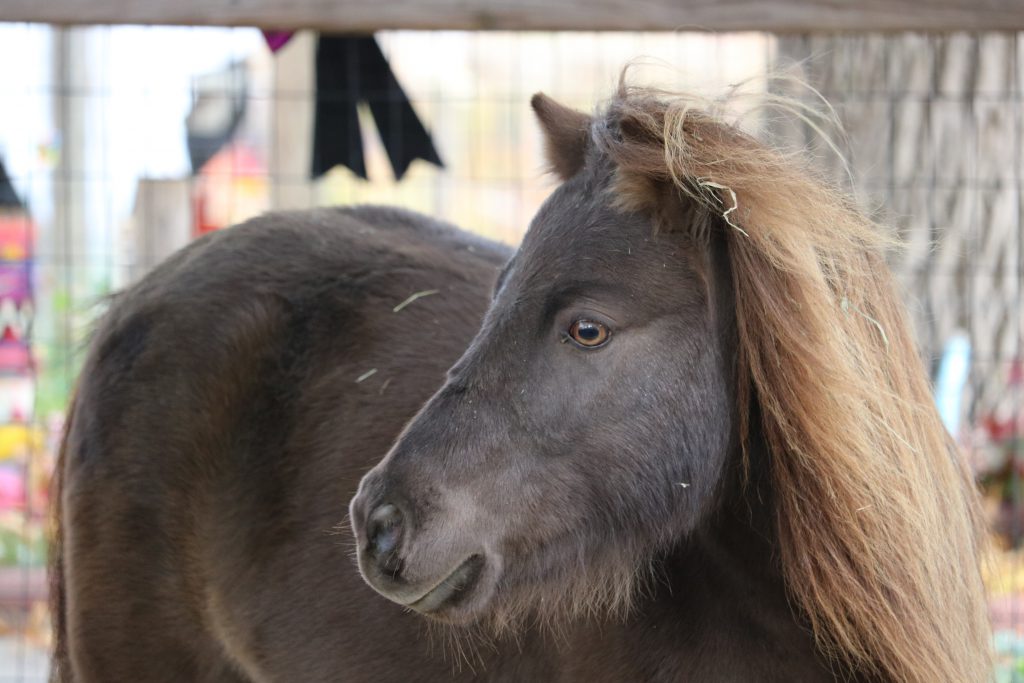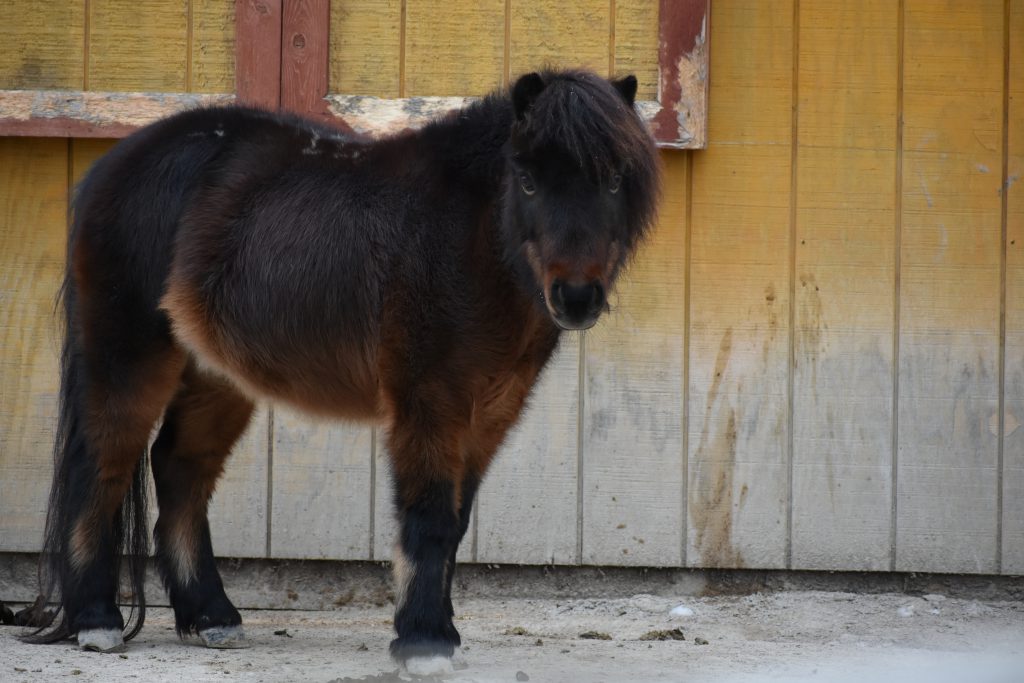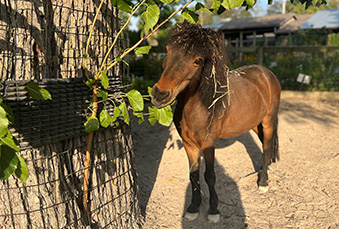Equus caballus | Miniature Horse/Mini horse
Names: Image & Sandman (Male)



Meet Image & Sandman
Don’t let their size fool you—Image and Sandman may be small, but they’ve got big hearts, big personalities, and a bond that’s impossible to miss. These inseparable miniature horses are a true testament to the strong emotional connections animals can form. If they’re ever apart, they’ll call out to each other until reunited—a beautiful reminder of their social nature.
You can find them living happily next to our Outback habitat, where they love greeting guests (and each other) with curious glances and the occasional whinny.
What Makes a Miniature Horse
Miniature horses are domesticated equines that were selectively bred over centuries to their small size, gentle temperament, and strong work ethic. Though they share close ancestry with standard-sized horses, miniature horses are scaled-down versions with the same proportionate features and elegant structure.
- The first true miniature horses originated in Europe in the 1600s and were often owned by European nobility, appearing in paintings and literature as early as 1765.
- These horses were once used as “pit ponies” in Northern European coal mines due to their ability to pull heavy loads in tight spaces.
- Horses in the U.S. today are descendants of European horses, as the native horses of the Americas went extinct around 10,000 years ago.
- Miniature horses weren’t popular in the U.S. until the 1960s, though the first miniature horse was imported in 1888. With DNA testing, it was found that the U.S. population has some Shetland pony in them.
Miniature horses are defined by their small size—standing no taller than 34 inches at the withers (shoulder blades)—and their well-balanced, proportionate build, much like their full-sized relatives.
Amazing Adaptations of Horses
Miniature horses may be small, but they share many remarkable adaptations with their larger relatives:
- Hooves: Horses evolved to have a single hoof rather than multiple toes, which helps them navigate tough, open prairie terrain quickly, a survival trait for avoiding predators.
- Long, Lightweight Legs: Built for speed, horses have long, slender legs with high ankles, which helps them outrun danger.
- Ears: Their funnel-like ears move independently, acting like radar dishes to catch sounds from all directions—essential for detecting predators in the wild.
- Vision: They have excellent vision, particularly based on movement, helping them detect potential threats.
- Sense of Smell: Miniature horses also have a keen sense of smell, which keeps them highly aware of their surroundings.
Small But Mighty
Though miniature horses may not be large enough for riding, they are surprisingly strong and capable of pulling 3-4 times their body weight! Their agility, intelligence, and gentle nature have led them to take on various important roles:
- Pulling small carts in mining operations.
- Assisting the blind as guide animals.
- Providing comfort as therapy animals.
Fun Fact: miniature horses, along with dogs, are the only two animals federally recognized as service animals!
Come Say Hi to Image & Sandman
Next time you’re near the Outback habitat, stop by and meet Image and Sandman. Whether they’re grazing in the sun or checking in on each other with a soft nicker, these two miniature horses will charm you with their big personalities and even bigger friendship.
Fact Sheet
Taxonomy
Genus: Equus | Species: caballus |
Kingdom: Animalia | Phylum: Chordata | Class: Mammalia | Order: Perissodactyla | Family: Equidae |
Favorite Enrichment Type
Slow-feeders or puzzle feeders with grain!
Life Span
- In the Wild: (Domesticated)
- In Human Care: 25 to 35+ years
Diet
- In the Wild: (Domesticated)
- At the Zoo: Alfalfa and Timothy hay mix.
Geographic Range
(Domesticated)
Habitat
Ancient horses were found in short grasslands and desert scrubland.
Miniature Horse Fast Facts
- Height: Under 34–38 inches tall at the withers.
- Strength: Can pull 3-4 times their body weight.
- Senses: Their ears move independently to capture sound.
- Personality: Extremely social and vocal, especially when separated from companions.
- Roles: Used as guide animals for the blind and therapy companions.
Status: Domesticated (Not Evaluated)
International Union for Conservation of Nature (IUCN) – Not Evaluated.
How to Find Us
To see our Miniature Horses in action, head on over to the back half of the zoo. They are located in between the Event field and the Outback viewing deck.
